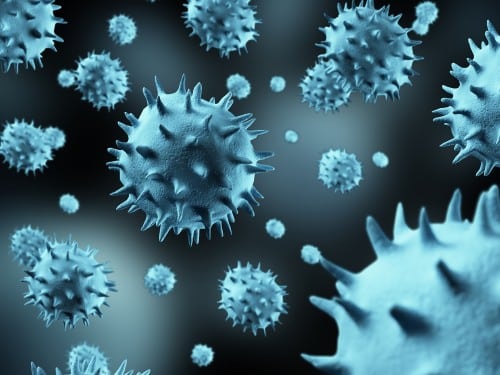Researchers claim that proteins involved in gene regulation once fought viruses

Viruses and their hosts have been at war for over a billion years. This battle resulted in a dramatic diversification of the viruses and the immune responses of the hosts. Although the earliest antiviral systems are long gone, researchers may now recover the remains of one of them, like a fossil, living in human cells.
A protein called Drosha, which helps control gene regulation in vertebrates, also helps fight viruses. This is what researchers reported in an article published in the journal Nature.
They hypothesize that Drosha and the family of enzymes called RNAse III belong to the original virus fighters in the common ancestor of animals and plants. "You can see the footprint of RNAse III. in the defense systems of all the kingdoms of life," says Benjamin Unver, a virologist at the Aiken School of Medicine at Mount Sinai Hospital in New York and the lead author of the article.
Plants and invertebrates produce RNAse III proteins in an immune response known as RNA interference, or RNAi. When a virus infects a host, the proteins cut the invader's RNA into clumps that prevent it from spreading. But vertebrates take a different approach, fighting viruses with powerful interferon proteins - while Drosha and a related protein regulate genes in the nucleus.
But in 2010, scientists witnessed a strange phenomenon: Drosha appears to leave the nucleus of human cells whenever a virus invades the cell. "It was strange and piqued our curiosity," says Anwar. His team later confirmed the findings, seeing that Drosha shows the same behavior in the cells of flies, fish and plants.
To test the hypothesis that Drosha leaves the nucleus to fight viruses in vertebrates, the researchers infected cells that had been genetically engineered to lack Drosha with viruses. They found that the viruses penetrated these cells more quickly. The team then introduced the Drosha from bacteria into fish, human cells and plants. The protein appears to cause viruses to replicate, suggesting that this is a role that goes back to the first ancestor of all groups. "Drosha is like the beta version of all antivirus protection systems," says Anwar.
According to the researchers, the proteins of the third RNA help the bacteria to maintain their RNA, and that later bacteria hacked the proteins against the genetic material of viruses. It indicates the number of occurrences of RNAse III proteins in the immune response throughout the tree of life. For example, some CRISPR systems, which are formed as a response of bacteria and archaea to attack by viruses, include RNAse III proteins. Plants and invertebrates use RNAi proteins for defense. And although vertebrates rely on interferons to control viruses, this study shows that Drosha still chases viruses, just as a golden retriever—a dog designed to catch waterfowl—fetches a stick as if it were a downed duck.
Donald Court, a geneticist at the National Cancer Institute in Frederick, Maryland, calls the findings interesting but he doesn't accept the evolutionary scenario. "RNase III is involved in many things, in almost all areas of life," he explains. He sees no reason to think that one antiviral system evolved into another. For example, he says, the fact that one CRISPR system includes RNAse III while others do not show that the proteins acquired the ability to fight viruses independently rather than by inheritance.
More of the topic in Hayadan:
